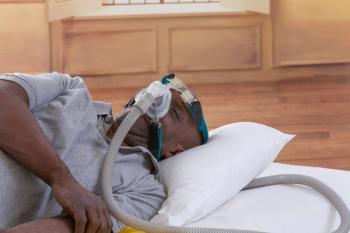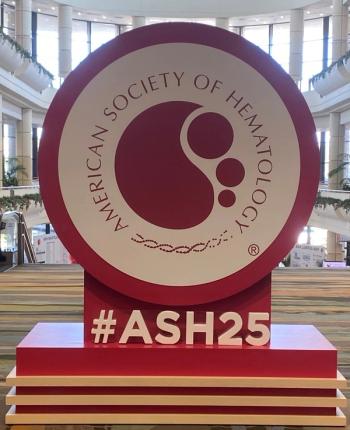
Phase 2 Study Shows Feasibility of Axi-Cel Delivery in Outpatient Setting
Key Takeaways
- The trial achieved a 93% objective response rate and a 76% complete response rate in outpatient settings, with manageable toxicity levels.
- Outpatient administration of axi-cel resulted in shorter hospital stays, potentially improving healthcare resource efficiency.
Outpatient treatment with axi-cel shows promising response rates for relapsed large B-cell lymphoma, enhancing accessibility in community oncology settings.
A clinical trial of patients with relapsed or refractory (R/R) large
Findings for ZUMA-24 (
The results come nearly 8 years after the axi-cel, sold as Yescarta, received its
Most of the 30 patients in ZUMA-24 had received 1 prior line of therapy, including an anti-CD20 monoclonal antibody and an anthracycline-containing chemotherapy regimen; 7 patients had received 2 prior lines of therapy. Patients were excluded if they had received CD19-targeted therapy, any stem cell transplant, or any genetically modified T-cell therapy.1
Authors, led by Lori A. Leslie, MD, John A. Theurer Cancer Center, Hackensack Meridian Health, New Jersey, outlined the treatment protocol: patients received leukapheresis to obtain mononuclear cells at enrollment, followed by lymphodepleting chemotherapy when they were 5, 4, and 3 days away from infusion. Bridging therapy was given at the investigator’s discretion, no later than 7 days before lymphodepleting chemotherapy. Patients were monitored daily for the first 7 days following infusion with axi-cel (2 x 106 CAR T cells/kg). Prophylactic dexamethasone of 10 mg was given before the axi-cel infusion and on days 1 and 2 after infusion.
During initial monitoring, patients were seen daily at a health care facility in the outpatient setting to evaluate toxicity and vital signs and to complete a neurologic assessment. An optional telemedicine visit was completed at the end of the day. Caregivers or patients contacted the clinic if any prespecified or new abnormalities arose. After 7 days, follow-up at longer intervals was permitted at the investigator’s discretion, although patients had to remain within 2 hours of the clinic for at least 4 weeks.
Additional results showed the following:
- The primary end point was incidence and severity of cytokine release syndrome (CRS) and neurologic events (NEs); median follow-up was 13 months for 30 patients treated with outpatient axi-cel
- Ninety percent of patients had grade 1-2 CRS, with no grade ≥ 3 CRS, and 80% of patients had NEs of any grade, with 23% having grade 3 or higher; no patient deaths were seen due to NEs
- Median time to onset of CRS was 4 to 7 days for NEs, with a median duration of 5 to 6 days, respectively
- All patients experienced adverse events (AEs), with 83% seeing AEs of grade 3 or higher; following axi-cel, 93% of patients were hospitalized (n = 28), with 4 days being the median time to first hospitalization, and a median stay of 8 days
- Most patients (n = 21) were hospitalized for grade 1 events; 4 patients (13%) were admitted to the intensive care unit for 2 to 7 days
In addition, 23 patients completed quality of life (QOL) screening at enrollment and following axi-cel infusion. One patient completed an initial patient-reported outcomes assessment following lymphodepleting chemotherapy and thus did not have an evaluable baseline assessment. For the 22 patients with evaluable data, scores on one QOL scale dropped from baseline at week 4, at the time of axi-cel infusion, and rose above baseline by month 3 following infusion and continued to rise at month 6. Scores on a second QOL scale showed a similar pattern.
The need for patients who are good candidates for CAR T-cell and bispecific therapy to receive treatment closer to home has been much discussed in recent years. This week, panelists
The ZUMA-24 trial involved a mix of academic and community centers, including the Greco-Hainsworth Tennessee Oncology Centers for Research, founded by the flagship practice of OneOncology in
In June, the FDA eased Risk Evaluation and Mitigation Strategies (REMS) requirements, and community oncology practices are gearing up to make therapies available. However, during the discussion, Humana’s Bryan Loy, MD, MBA, said the FDA’s decision to eliminate the REMS requirement for dual certification for community practices and their hospital partners could make payers ask whether outpatient delivery is safe and effective.3
The ZUMA-24 authors acknowledged some challenges of the outpatient approach. Notably, sending patients home following treatment largely relies on caregivers to notice signs of AEs, even before patients themselves. Increasingly, clinics are using remote monitoring tools to track patients’ responses, and many see this approach as essential to bringing CAR T-cell therapy and bispecifics into community settings. CMS has begun offering community oncology practices reimbursement for remote patient monitoring.
Authors reported on efforts with this approach in ZUMA-24, which enrolled patients between August 2022 and March 2024. They wrote, “The feasibility of central monitoring was investigated through the voluntary use of a wearable device to monitor body temperature and serve as an early warning for the potential onset of AEs. There were challenges with remote monitoring at the sites, and while the device was predictive of AEs, the data were limited due to small sample size and some false positive/false negative results; therefore, interpretations of these data are limited.”1
The authors noted that in other studies involving wearable devices, adherence was above 79%, suggesting strong potential for monitoring.
“In conclusion, this trial demonstrated that outpatient administration of axi-cel was feasible in a multicenter setting. Prophylactic corticosteroids coupled with early intervention, including hospitalization for AE management, resulted in relatively low rates of high-grade toxicities,” they wrote. “Hospital length of stay was shorter than in previous clinical trials with inpatient administration of axi-cel, which could translate to more efficient use of health care resources and alleviate capacity constraints on care.”
References
- Leslie LA, Baird JH, Flinn IW, et al. Outpatient axicabtagene ciloleucel for relapsed/refractory large B-cell lymphoma: ZUMA-24 primary analysis. Am J Cancer Res. 2025;15(8):3417-3433. doi:10.62347/GJNN1023
- FDA approves axicabtagene ciloleucel for large B-cell lymphoma. News release. FDA. October 25, 2017. Accessed September 13, 2025.
https://www.fda.gov/drugs/resources-information-approved-drugs/fda-approves-axicabtagene-ciloleucel-large-b-cell-lymphoma - Caffrey M. FDA change smooths way for bispecific access in community practice. AJMC®. September 9, 2025. Access September 13, 2025
https://www.ajmc.com/view/fda-change-smooths-way-for-bispecific-access-in-community-practice
Newsletter
Stay ahead of policy, cost, and value—subscribe to AJMC for expert insights at the intersection of clinical care and health economics.













































